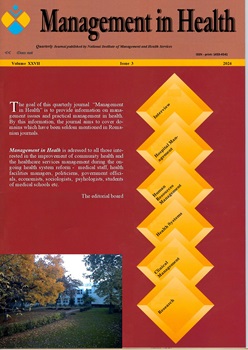Abstract
BACKGROUND: Decisions taken under conditions of risk are very
common, in this case the decision-maker knows all the decision-making
alternatives, and probabilistic estimates are associated with their consequences. In
this case, an alternative can have at least two consequences, the decision-maker
having to calculate the probability of each of them occurring based on previous
clinical experiences.
METHOD USED: The most suitable model for specific decisions in risk
conditions in the oncology field is based on the Decision Tree Method, because
decision-making situations are complex, and can be broken down into a series of
chained decisions and moments in which the unpredictability occurs. The strategy
consists in establishing a value of each decision variable, conditioned on its past
(clinical history). In the absence of a definite clinical picture of the patient, the
values assigned in the first step for testing the decision tree were generated
according to the Hurwicz model.
RESULTS: A decision tree was created regarding the oncological practice in
conditions of risk for colon cancer, based on the latest clinical practice guidelines,
evaluating the value of the maximum utility expected until the cure. It was noted
that, despite the approximate calculation performed within the decision tree, the
survival chances of the three types of tumors (for colon cancer) were very close to
those statistically demonstrated in the specialized literature, which makes the
methodology approached to be credible, and with chances to be developed further.
CONCLUSIONS: The study carried out for the analysis of the way of
making decisions under risk conditions is relevant for the synthetic approach of
the decision tree in completing the clinical tree resulting from the medical practice
guidelines.

